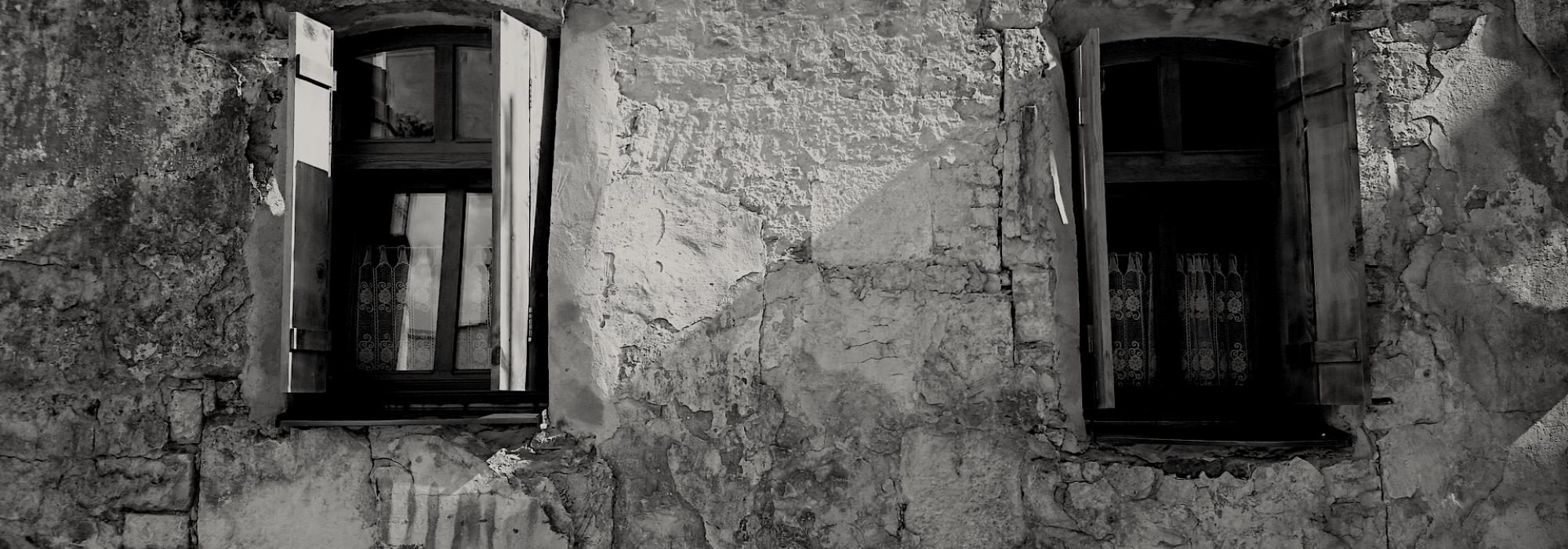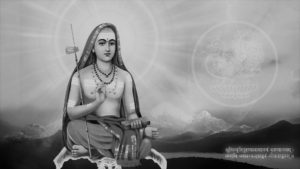Another legend in Sl Bhyrappa's ‘Daatu’ relates to the belief that is prevalent among persons of 'lower castes' that if a Brahmin enters their slums, the deity of wealth, Lakshmi would go away from their houses. It is not known why and how this belief came into existence. When Venkataramanayya entered the ‘Harijana keri’, i.e., the area where Harijans (people belonging to 'lower castes') in his insane state of mind, he is pelleted with dung and shooed away like a mad dog, in keeping with the prevalent beliefs. The folk legend runs as follows:
Long, long ago, the deity Lakshmi came down to the earth from her abode in Vaikuntha during her menstrual period. She first went into the brahmin locality and asked them for permission to rest there for three days. The brāhmaṇas, fearing that their place would get defiled, refused shelter to the goddess, scolded her and told her to leave. The deity then went to the area where ‘Komatigara-shettis’ (businessmen) lived. They offered her shelter and treated her generously. Lakshmi was pleased and blessed them. That is why they have prospered and became rich through their trade and business. After spending a day there, Lakshmi then went to the area where the outcasts lived. Out of fear and devotion, they too offered her a hut and treated her well. The deity Lakshmi was pleased with them also. But since the brahmins had been unkind to the goddess, they believed that if they allowed such a sinner to enter their area, he will have to be pelleted with dung and shooed off: this became a custom. This practice was probably born out of their need to protect their young girls from harassment by brahmins and people of other upper classes, which did happen sometimes. The story also reveals the latent hatred of the untouchables towards brahmins.
The census meeting in ‘Daatu’ creates a climactic situation, as it unveils the great ambition of people of all castes and all strata of society to be included in the list of upper castes, while retaining the facilities and the privileges that are given to their own caste. Everyone wants to become or be treated like brahmins. Here, legends and stories from mythology and history are used to evoke the political and social milieu of the present social situation. Before the beginning of the census meeting, pamphlets of various colours and sizes were accumulated in Venkatesha’s house, for he was going to decide who should belong to which caste, or how the castes should be upgraded. Every community was ready with a myth and would cite a great ancestor of mythical origin. They would proclaim that they, too, are in reality brahmins. The Beda tribe (of hunters) claims kinship with the Sage Valmiki, treating him as their ancestor. The Bedas say that Valmiki had protected Seethamma and raised Lava and Kusha. In the olden days, all rishis and seers were Bedas. They demand that they be their caste should be written as 'Valmiki-brāhmaṇas' (266-272 ‘Daatu’), since they were all of brahmin origin.
After this allegiance to mythical lineage comes the historical ancestry of Kalidasa. By citing his semi-historical and literary ancestry, Kurubas insist that they should be called the 'Kalidasa caste' and not as Kurubas. Another pamphlet fretted over the caste of goldsmiths. The community calls itself Vishwakarma. The leaders of this community claim that Shankaracharya, who founded the mathas in Sringeri and other places, belonged to their caste. They also had an interesting story to tell.
One day, so the story goes, Ācārya Shankara was bathing in the river Tunga. He forgot his ‘Padukas’ (footwear) there and went to the temple of mother Sharada. After the worship he came out, and the sun was scorching. He asked his disciples to fetch his padukas. The brahmin disciples carried the paduka on their heads and brought them to the Ācārya. The Vishwakarma disciples, however, trod on the padukas one after the other and brought them to him. The Ācārya got angry and said l curse you for your insolence. Though you are my own people, you will not be entrusted with the administration of the matha. It will be entrusted to the brahmins, who belong to the other caste. When the elders of the Vishwakarma caste then begged for pardon, Ācārya Shankara said that the curse would be removed after a thousand years, and he went to the Himalayas for penance. Now they say the time has come to fight and get back the administration of brahmin mathas. So, in the coming census, they claim that their caste should be mentioned as 'Vishwakarma-brāhmaṇas'.
Another pamphlet exhorted the Liṅgayat community to refer to their caste as Liṅgayat or Veerashaiva, and not to mention the sub-castes. In the same way, there were pamphlets urging people not to mention sub-castes such as Sreevaishnava brāhmaṇaa or Madhwa brāhmaṇaa, etc. The leaders had been pressing Venkatesha to quote some text as authority to support their demands. But Venkatesha was shrewd enough to pay them with their own coin. He told the Beda leader that it was not mentioned anywhere in the Ramayana that Valmiki had any children, so how could they claim that they were Valmiki’s descendants? Satanis who claimed to be the followers of Ramanujācārya had also requested Venkatesha to include their name in the list of brahmins.
What is happening here? All the myths-mythological and social - established through the ages are being demolished and a new myth is being created about caste divisions. But the great irony here is, though all these castes claim their origins to great rishis or ācāryas, and aspire to get identified brahmins (or get called 'brahmins') this aspiration is not a unifying power or principle, but it causes a new discord, and it becomes a dividing force. Thus this new myth becomes more powerful than the earlier ones. However the desire of all these communities, that their castes should be written as brahmins along with their original caste seems strange. All these point out to the myth of Vishwamitra’s desire to become a Brahmarshi like Vasistha. Vishwamitra’s myth is not cited here. But, where as Vishwamitra had that will power, continuous penance and achieved that state of Brahmarshi, now all these leaders want to be called brahmins only for the name sake. Vishwamitra could create ‘Trishanku Swarga’ for Trishanku, but these leaders beg a person like Venkatesha to add the tag of brahmin to their names. Perhaps the caste myth, and its complexities have nowhere dealt as poignantly as in ‘Daatu’.
The last person, that comes with his own legend is the leader of the outcasts, Bettayya. This legend too includes mythical and folklore elements. Bettayya cites the story of Jamadagni, Matangi and Parashurama. Bettayya says that the name ‘madiga’ has come to them through the maid Matangi, who was in the āśrama of Jamadagni rishi. He states that their people too were born out of the body of brahmin woman, but it was not known why they were treated as untouchables. Bettayya’s story is another example, to show how the original myth has been twisted, and a new version of myth is created with the passage of time.
Jamadagni’s wife Renuka was so chaste that with the power of her chastity, she would shape the water as a pot and carry it on her head and bring it to the worship of her husband. Her maid Matangi would follow her to the river, daily. One day looking at Karthaveeryarjuna in the sky, Renuka’s mind, for a second lost its composure. That day, water did not shape itself into pot. Knowing this with his power of penance Jamadagni ordered his son Parashurama to behead his mother. When Parashurama aimed his arrow, the necks of Matangi and Renuka fell down. Jamadagni pleased with the obedience of his son, asked him to ask for a boon. The son wanted his mother to be back alive. The father instructed the son to join the heads and the bodies and sprinkle holy water. In the semi-darkness, Matangi’s head was joined to Renuka’s body and vice versa. To avoid further beheading, Jamadagni accepted the body of Matangi with the head of Renuka. This Matangi was an untouchable. Now her body was of rishis wife, and the head was of rishis wife. Being the children of such woman, how can they become untouchable?
This is the question of Bettayya. This incident had not been mentioned in the shastras or in any texts. Further Venkatesha says caste is decided by the head. Satya too, who was a sincere student of history and mythology said what Bettayya was telling was a lie. Yet Bettayya wants Venkatesh to remove the stain of untouchability from them, by saying Matangi was not untouchable as she was going with Renuka, to the river (276-278, ‘Daatu’). Bettayya’s words prove the strength of legends: 'lt is different whether the story is true or false. Story means ‘Shastra’, shastra means story. If it is said, it is like this in shastra, is it not easy to believe?’ Thus at some level, the legend, stories, rituals, myths customs intertwine with each other and become the governing forces
















































